You might think acacia wood is all sunshine and rainbows, but hold onto your hat!
We’re about to reveal the flip side. Beyond its trendy reputation, some unexpected quirks could leave you scratching your head.
In this no-nonsense guide, we’re spilling the beans on 9 key disadvantages of acacia wood.
Whether you’re planning a home makeover or just curious about this popular material, buckle up. It’s time to uncover the real deal and ensure you’re well-prepared for the journey ahead.
1. Sensitive to temperature variations
Although Acacia is one of the hardest woods, it doesn’t hold up well under wide temperature variations. For instance, Acacia easily cracks in hot temperatures.
Studies show that high temperatures damage the fibers in acacia lumber, causing it to crack with ease. The problem is even worse in regions that experience significant temperature fluctuations over a single day.

For instance, acacia furniture will break down easily in regions with hot daytime temperatures and freezing night temperatures.
Acacia wood also swells in highly humid or rainy/snowy conditions. This makes acacia furniture unsuited to outdoor conditions.
If it’s the only material you have for outdoor furniture, rotate the furniture to avoid over-exposure to outdoor conditions. Additionally, avoid direct exposure to heat sources, such as sunlight and the fireplace.
2. Requires significant maintenance
Unfortunately, acacia wood furniture items require significant maintenance to maintain their appearance and physical characteristics.
For instance, you must periodically wipe acacia furniture with a slightly moistened cloth to eliminate dust and prevent the accumulation of dirt. Otherwise, the surfaces can become too dry and begin to track.
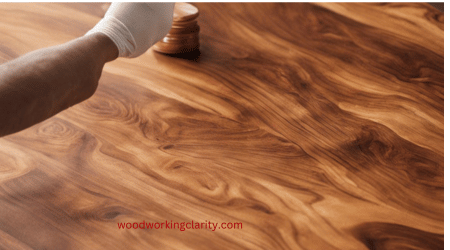
However, you can’t just soak the wiping rag with anything. For instance, silicon and ammonia-based cleaning products are out of the equation as they contain properties that can cause acacia wood to become too dry and crack.
Instead, wipe the furniture with a warm soapy water solution. Finally, you must oil your acacia wood furniture with selected preservatives, or the risk of warping is even greater.
Many experts recommend pigmented finishing oil over transparent oil for better UV protection. Unfortunately, not many people are prepared for this level of care.
3. Irregular, unpredictable grain structure
Some people love the unpredictable, irregular grain structure of acacia wood. However, many people find it complex and difficult to fit into existing décor.
Although no wood is perfect, many woodworkers would rather work with a straight, predictable grain pattern. For instance, we saw earlier that acacia wood is characterized by many knots.
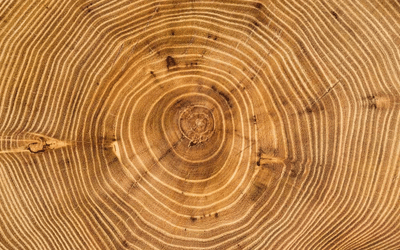
Wood knots come in many forms, though the three main categories are sound (tight), unsound (loose), and encased knots. Whichever type, these knots affect the continuity of wood fibers, sometimes even breaking the fibers.
Knots have two major impacts on woodworking. First, they weaken solid wood. The knot area becomes a weak link. This makes knotted wood pieces unideal for applications that expose the lumber to significant loads, such as making wooden bed frames.
Secondly, irregular grain structures make fitting furniture into any existing décor difficult. So you must be very careful not to disrupt the existing harmony.
4. Heavy and very hard
We’ve already seen that acacia wood is rated 2,300 on the Janka hardness test, making it harder than hickory and white oak. While this is good for durability, the extreme hardness makes the wood very difficult to work.
For instance, you need power tools to cut some hardwoods as you cannot cut them with hand tools. Unfortunately, Acacia is one of the wood types that are very difficult to cut.
It is even harder to cut than maple, one of the hardest domestic woods, rated 1,450 on the Janka hardness scale. That tells you everything you need to know about the workability of acacia wood.
Acacia is about as hard if you’ve ever tried to cut bamboo.
Additionally, Acacia is rather heavy. Working with heavy wood types is challenging because you must frequently lift wood pieces when sawing, cutting, smoothing, joining, etc.
Doing so becomes difficult if the wood is relatively heavy. Transporting heavy trunks is also a massive challenge. Keep in mind that Acacia isn’t native to North America. It’s mostly imported.
5. Expensive
Finally, many woodworkers and their clients are not fans of acacia timber because, despite the many disadvantages, it’s still very expensive. However, it’s worth noting that “expensive” is relative.
For instance, Acacia is cheaper than other exotic woods like mahogany and rosewood. So, if you’re prepared to pay for mahogany, you won’t have a problem paying for acacia wood.
However, it’s significantly more expensive than most American hardwoods, including maple and oak.
The average price per foot for 4×4 Australian Blackwood acacia is $7.90, with general prices as high as $10.50 per foot.
Meanwhile, soft maple costs about $5 per foot, while hard maple costs about $6/foot. Red oak is even more affordable at about $3/foot.
Sometimes, it makes more sense to go with locally available options, such as oak, rather than spend more on Acacia.
Recommend Reading: What is the cheapest wood to buy?
6. Prone to cracking
Acacia wood can develop cracks when it gets too dry or the environment changes.
To prevent cracking, take care of the wood by moisturizing it regularly. Keep it away from extreme dryness and direct heat sources.
7. Susceptible to pests
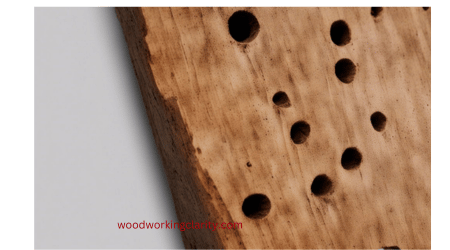
Bugs like termites and beetles may be attracted to acacia wood.
Check the wood regularly for signs of infestation. If pests are found, use treatments to protect the wood or get help from professionals. Keeping the wood clean and dry can also discourage pests.
8. Limited color options
Acacia wood is usually light to medium brown, which may not match everyone’s taste.
Finding different colors can be hard. Consider other woods or try staining or painting acacia wood for more color choices.
9. Not suitable for outdoor use without treatment
Acacia wood is durable, but it needs protection outdoors.
Extended exposure to sunlight, rain, and moisture can damage the wood. Treat it with water-resistant sealants or finishes for outdoor use.
Remember to maintain and reapply the treatments regularly.
What is Acacia Wood?
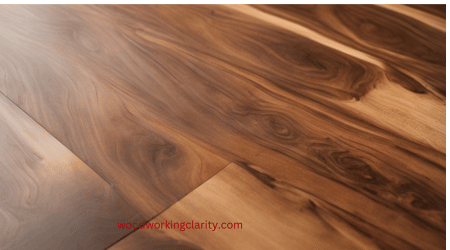
The acacia tree is a real globe-trotter, originally from Australia but now found worldwide. Called “thorn tree” or “Asian walnut” depending on where you are, it’s incredibly versatile.
Standing about 20 to 30 feet tall, its hardwood is prized for furniture.
But that’s not all!
Acacia also plays a big role in cosmetics and medicine, thanks to beneficial compounds in its bark and leaves.
Whether you call it by its Greek name, which means “thorny Egyptian tree,” or one of its many other names, the acacia is a tree with endless talents.
Acacia wood furniture pros and cons
Acacia wood furniture is highly prized for its durability, water resistance, and rich, natural color.
It’s a solid investment if you’re looking for long-lasting, attractive pieces for indoor or outdoor use.
However, there are some downsides. Acacia wood can be heavy, making it less convenient for furniture that needs to be moved frequently.
It’s also a bit on the pricey side compared to other hardwoods. Additionally, its natural oils can sometimes interfere with paint or stains if you consider a DIY finish.
Disadvantages of acacia wood flooring
It can get scratched easily
Acacia wood flooring is quite strong, but it can still get scratched.
Moving heavy furniture or pets with sharp claws can leave marks on the floor. Use pads under furniture legs to prevent scratches and be careful when moving things around.
Affected by moisture
Acacia wood flooring can be sensitive to moisture. Too much moisture or high humidity can make the wood expand and get warped or bumpy. On the other hand, low humidity can cause the wood to shrink and create gaps.
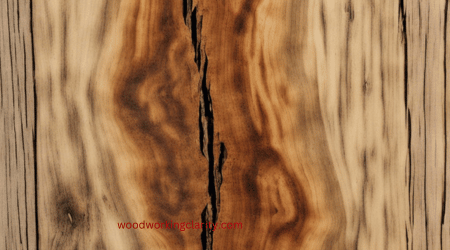
Keep the humidity levels steady and quickly clean up any water spills to protect the flooring.
Color can change:
Over time, acacia wood flooring’s color may change because of sunlight exposure. It might become darker or develop a different look.
Some people like the natural color change, but if you want the color to stay the same, you might need to use window coverings to block sunlight or choose a different type of flooring.
Needs regular care:
Acacia wood flooring needs regular cleaning to stay nice. Sweeping or vacuuming regularly to remove dirt and debris is important. Sometimes, you might need to refinish or reseal the flooring to keep it protected and looking good.
It might look dull or worn out if you don’t take care of it properly.
Disadvantages of acacia wood outdoor furniture
First, acacia wood is sensitive to the elements. Sun and rain can fade and crack it over time. Second, it needs some TLC. A regular cleaning and protective sealant will go a long way.
Lastly, watch out for uninvited guests like termites or fungi.
Moisture attracts them, so regular check-ups are a must. All in all, acacia’s beautiful but does demand consistent care.
Acacia Wood Properties and Characteristics
Acacia wood is one of the most durable and naturally water-resistant woods available.
Many people also like acacia for outdoor furniture because it can withstand the elements for years without rotting or warping.
Is Acacia a hardwood?
Acacia is a hardwood. In fact, some studies indicate that it’s the hardest wood in the class of hardwoods, though we believe that title goes to the Australia Buloke ironwood native to Australia.
Nevertheless, at 2,300 PSI on the Janka scale, it’s 55% harder than the European white oak and about 23% harder than hickory. So, this should tell you something about Acacia’s hardness.
However, hardness is just one of its many qualities. The following are several other characteristics that make Acacia unique;
What does acacia wood look like?
Acacia wood’s natural colors come in a wide range, from light brown to a dark mahogany hue. The heartwood is typically medium to dark brown. Most species of Acacia have a yellow-green undertone.
However, you can stain or finish acacia wood to your preferred effect.
Acacia wood grain
Irregular grain structures characterize the acacia tree. A wavy grain pattern is the most common. Figured grain patterns, such as curl (commonly known as “rings” in Australia), are also common.
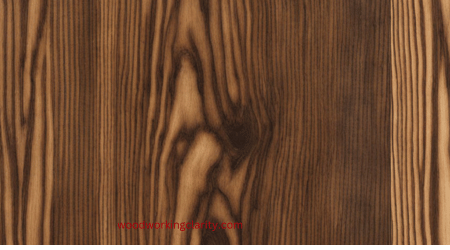
Knots
Acacia wood boards are characterized by a high number of knots due to the high number of branches that can grow from a single acacia tree.
Naturally antibacterial
Acacia is naturally antibacterial. This means you can safely use it for preparing and serving food. Its quality makes it popular for making wooden spoons, chopping boards, and other wooden cookware.
Acacia wood hardness
The hardness of acacia wood is rated at 2300 pounds of force. This means that it takes that much pressure to make an indentation in the wood.
For comparison, oak has a hardness rating of 1700 pounds of force and cedar clocks in at 1100 pounds of force. This shows you how strong acacia wood is.
Acacia wood durability
Acacia wood is highly durable. This makes it one of the most scratch and dent-resistant woods available.
Acacia furniture can last up to 40 years when properly maintained, making it a long-term investment for those seeking quality and durability.
Its robust nature makes it an ideal choice for applications that require strength and resilienc
Read more: Best Wood for Chopping Boards
Is acacia wood good?
Yes, acacia wood is an excellent choice for furniture due to its durability, water resistance, and rich color.
It’s especially good for both indoor and outdoor pieces. However, it does require regular maintenance to prevent weathering and fend off pests.
With proper care, furniture made from acacia wood or walnut can last for years, offering a beautiful and sturdy option for your home.
Is acacia wood toxic?
Generally, acacia wood is safe and non-toxic, ideal for furniture and kitchenware. However, knowing that not all acacia species are created equal is key.
Take Acacia Nilotica, for example. Its leaves are poisonous, raising questions about the wood’s toxicity. So, if you’re eyeing acacia for household use, it’s smart to check the species and follow manufacturer guidelines.
This ensures you’re making a safe choice, especially for items that come into contact with food or pets.
Is acacia wood expensive?
Acacia wood sits in the mid-range when it comes to cost, typically less expensive than high-end woods like teak but more costly than options like oak.
On average, you might pay around $3 to $8 per square foot for acacia, while teak can go up to $22.
Oak usually falls between $2 to $6. It’s a durable, attractive option that balances quality and price, making it a popular choice for many homeowners.
Is acacia wood good for furniture?
Yes, acacia wood is a stellar choice for furniture. It’s known for its durability and can withstand wear and tear, making it perfect for high-traffic areas.
The wood is naturally water-resistant, which adds to its longevity. Plus, it has a beautiful grain and rich colors that can elevate the aesthetics of any space.
So, if you’re eyeing a long-term investment combining quality and beauty, acacia wood furniture is a solid choice.
Is acacia wood heat resistant?
No, acacia wood is not heat-resistant. While it scores high on durability and water resistance, it’s susceptible to damage from extreme temperatures.
Warping, cracking, or color changes can occur when exposed to heat. So, for hot pots or dishes, always use a trivet or heat pad to protect your acacia furniture and keep it looking its best.
Is acacia wood heavy?
Yes, acacia wood is relatively heavy and dense, contributing to its durability and strength.
Its density typically ranges between 40 to 50 pounds per cubic foot, making it heavier than many other common woods like pine.
This weight can be an advantage for furniture pieces that need stability but could be a drawback if you need to frequently move the furniture around.
Is acacia wood strong?
Yes, acacia wood is strong and durable, making it an excellent choice for furniture and other heavy-duty applications.
With a Janka hardness rating of around 1750 lbf, it’s more resistant to scratches and dents compared to many other hardwoods.
Its inherent strength makes it well-suited for high-traffic areas and long-term use.
Is acacia wood food safe?
Yes, acacia wood is generally considered food-safe and is commonly used for kitchen items like cutting boards, bowls, and utensils.
Its natural oils create an inhospitable environment for bacteria. They don’t multiply and gradually die off, which is excellent news for your kitchen hygiene.
Acacia cutting boards and utensils are reliable choices for a clean and safe food preparation surface.
Does Acacia Wood Crack?
Unfortunately, yes. Acacia wood tends to crack when exposed to hot conditions. The main reason is that heat breaks down the otherwise very strong acacia fibers, causing the wood to become brittle. Brittle wood cracks very easily under heat.
However, you can minimize the risk of cracks by keeping your acacia wood products away from direct sunlight and other heat sources.
Does Acacia Wood Warp Easily?
No, acacia wood doesn’t warp easily. But, of course, all wood types can warp in extreme conditions. However, Acacia is one of the few wood types that are extremely resistant to warping.
The main reason is that Acacia is highly water-resistant. Wood warps when its moisture content changes abruptly and unevenly. However, acacia doesn’t lose moisture easily, and even when it does, it’s rarely uneven.
The good thing is you can unwarp the wood easily as well.
How Long-Lasting is Acacia Wood?
Acacia wood is extremely durable, typically lasting a lifetime with good maintenance. The high density and hardness of the wood make it weather, scratch, and rot-resistant, allowing it to live for many years.
In fact, acacia wood furniture can last up to 30 years, even with not-so-good maintenance. That said, though, proper maintenance is critical to ensuring a long life of beauty and reliable performance for acacia wood products.
Acacia Wood Uses
Acacia wood is used for many applications, ranging from furniture making to flooring and home décor. The following are some of the main applications;
- Furniture making: Although it has many uses, the most common application is making indoor furniture items and outdoor patio furniture. Solid acacia furniture pieces are durable, strong, and very beautiful. The naturally fine texture also results in beautiful patio furniture.
- Hardwood flooring: There are a few reasons why acacia wood makes one of the best materials for hardwood flooring. For one, it’s visually striking. Secondly, Acacia is highly waterproof. This makes it perfect for kitchens. Above all, Acacia is an extremely durable wood, meaning you don’t have to worry about replacing the floor every few years.
- Home décor: The two main qualities that make Acacia a good choice for home décor are the unpredictable grain structure and the many ways you can use Acacia. You can even stain it to different degrees to give varied tones to your decoration pieces. Here’s how to stain acacia wood.
- Cutting boards and kitchenware: Finally, acacia wood makes excellent cutting boards and kitchenware.
Related Post: Rubber Wood Furniture Disadvantages
FAQs
Is Acacia wood Bad?
No, acacia wood is not bad. While it has several downsides, as do all other wood types, it’s also one of the best options for making outdoor furniture. It’s hard, weather-resistance, and extremely durable.
What is acacia wood used for?
The most common use of acacia wood is making furniture. However, Acacia’s strength also makes it a viable option for support beams in the construction industry. It also has many uses in practical applications.
See Also: Best Wood to Build a Desk.
Is Acacia a good choice for outdoor furniture?
Yes, Acacia is one of the best wood types for making outdoor furniture.
It is dense, durable, and highly weather-resistant. Moreover, acacia wood doesn’t rot easily. These qualities make it the perfect choice for outdoor furniture.
Is acacia wood good for a dining table?
Yes, acacia wood is a great material for dining tables. Its density and hardness make it resistant to scratches and water damage, which makes it a perfect material for high-traffic areas. Additionally, the natural oil in the wood gives it a beautiful finish that will resist fading over time.
What is Acacia Veneer?
Acacia wood veneer is a type of veneer made from acacia trees. It is reddish to dark brown, with regular dark brown zones. The grain is interlocked, and the texture is medium to fine. Of all the woods, Acacia is considered one of the best woods for making veneers.
Is acacia wood water resistant?
Yes, acacia wood is both highly durable and water-resistant. It’s often used for boat building because of its resistance to rot and decay. It’s also a popular choice for outdoor furniture, as it does not warp or rot easily.
Find out how Acacia Compares with other wood types;
Disadvantages of Acacia Wood Summary
Acacia wood is one of the hardest hardwoods, making it a favorite for making heavy furniture like dining sets. It’s also extremely weather-resistant, making it ideal for outdoor furniture.
However, always remember that Acacia isn’t perfect. For instance, acacia wood is too sensitive to extreme temperatures and sunlight. This means the wood demands more regular upkeep than others.

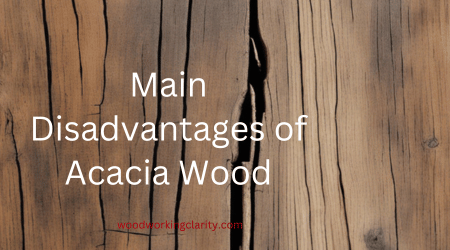
Very informative site regarding types of hardwood uses and care. Thank you very much for this information.
I have a kitchen table that is Acadia would how do I maintain it I read you can use warm soapy water to wash it should I apply pledge every so often thank you very much hope to hear back from you